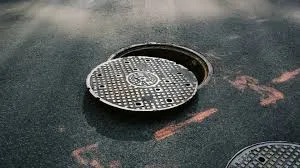lever operated butterfly valve
Lever Operated Butterfly Valve A Comprehensive Overview
Butterfly valves are widely used in various industrial applications due to their simplicity, efficiency, and compact design. Among the different types of butterfly valves, the lever operated butterfly valve stands out as a user-friendly option that allows for easy control and quick operation. In this article, we will explore the features, benefits, applications, and maintenance of lever operated butterfly valves.
What is a Lever Operated Butterfly Valve?
A lever operated butterfly valve consists of a disc, which is flat and circular, positioned in the center of a pipe. It works by rotating the disc around an axis perpendicular to the flow of the fluid. The lever, attached to the disc, extends outside the valve body, allowing operators to open or close the valve manually by rotating the lever.
Key Features
1. Simplicity The lever mechanism is straightforward, making it easy to operate. Users can quickly understand how to control the valve without specialized training.
2. Fast Operation Lever operated butterfly valves can be opened or closed with a simple quarter turn of the lever, providing quick isolation of the flow, which is crucial in emergency situations.
3. Compact Design These valves are more compact than other valve types, saving space in piping systems. Their lightweight construction also makes them easier to install.
4. Versatility Lever operated butterfly valves can be used in a variety of applications and are compatible with numerous fluids, including water, oil, gas, and chemicals.
5. Cost-effective Compared to other valve types, they are generally less expensive, both in terms of initial purchase and maintenance costs.
Benefits of Lever Operated Butterfly Valves
The benefits of using lever operated butterfly valves in various applications are numerous
- Ease of Use The manual operation via the lever is intuitive, reducing the need for automation in systems that do not require it.
- Minimal Friction Loss The streamlined design of the butterfly valve ensures low resistance to flow, resulting in minimal energy loss.
- Low Maintenance Unlike other valve types that may require regular lubrication or intricate maintenance routines, lever operated butterfly valves are simple to maintain
.lever operated butterfly valve

- High Reliability Made from durable materials such as stainless steel, these valves are designed to withstand high pressures and temperatures, ensuring longevity and reliability.
Applications
Lever operated butterfly valves are ideal for a wide range of applications, including
- Water Treatment Facilities Used for regulating and isolating water flow in treatment processes.
- Chemical Processing Employed in systems handling corrosive and non-corrosive fluids due to their robust design.
- HVAC Systems Commonly utilized in heating, ventilation, and air conditioning systems for controlling air flow.
- Food and Beverage Industry Lever operated butterfly valves are suitable for sanitary applications because they can be easily cleaned and are less likely to trap contaminants.
- Wastewater Management Used in various stages of wastewater treatment processes to control and divert flows.
Maintenance Tips
To ensure optimal performance and longevity of lever operated butterfly valves, regular inspection and maintenance are crucial
1. Visual Inspection Regularly check for any signs of wear or damage to the valve body and lever mechanism.
2. Cleaning Depending on the application, ensure that the valve is kept clean to prevent buildup that could affect operation.
3. Lubrication While maintenance is minimal, a light lubrication of the moving parts can aid in smooth operation.
4. Functional Testing Periodically test the valve to ensure that it opens and closes effectively without excessive force.
In conclusion, lever operated butterfly valves are a reliable, efficient, and cost-effective solution for controlling fluid flow in various industries. Their simple design and ease of use make them an attractive option for operators, while their versatility and low maintenance needs make them a smart choice for many applications. By understanding their features and benefits, users can make informed decisions that enhance operational efficiency in their systems.
-
The Smarter Choice for Pedestrian AreasNewsJun.30,2025
-
The Gold Standard in Round Drain CoversNewsJun.30,2025
-
The Gold Standard in Manhole Cover SystemsNewsJun.30,2025
-
Superior Drainage Solutions with Premium Gully GratesNewsJun.30,2025
-
Superior Drainage Solutions for Global InfrastructureNewsJun.30,2025
-
Square Manhole Solutions for Modern InfrastructureNewsJun.30,2025
-
Premium Manhole Covers for Modern InfrastructureNewsJun.30,2025
